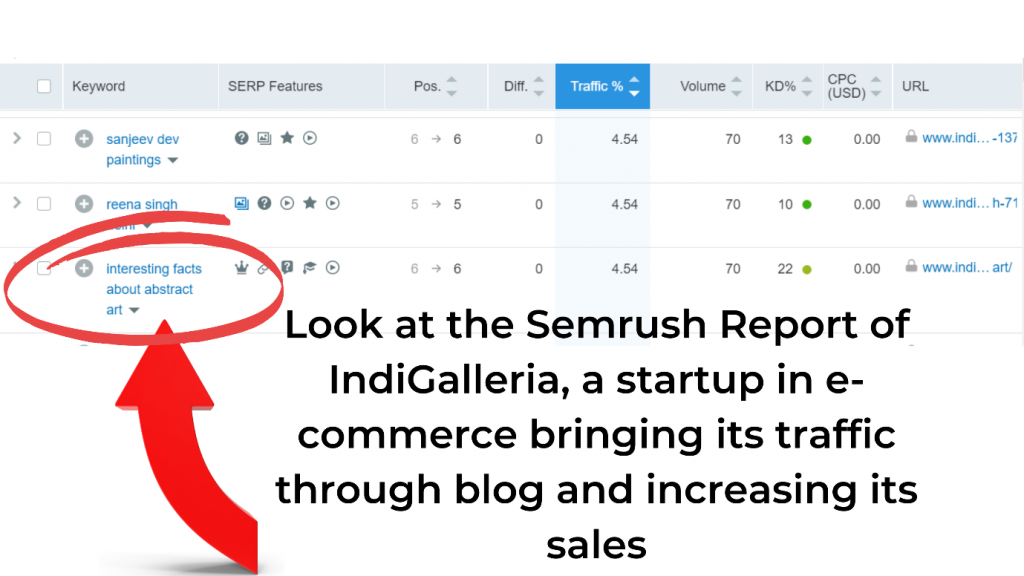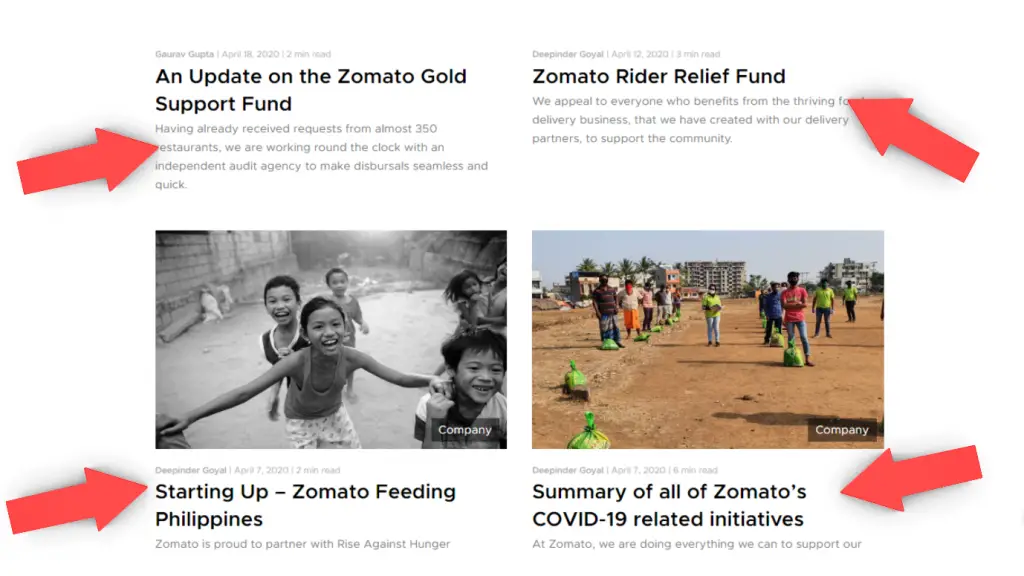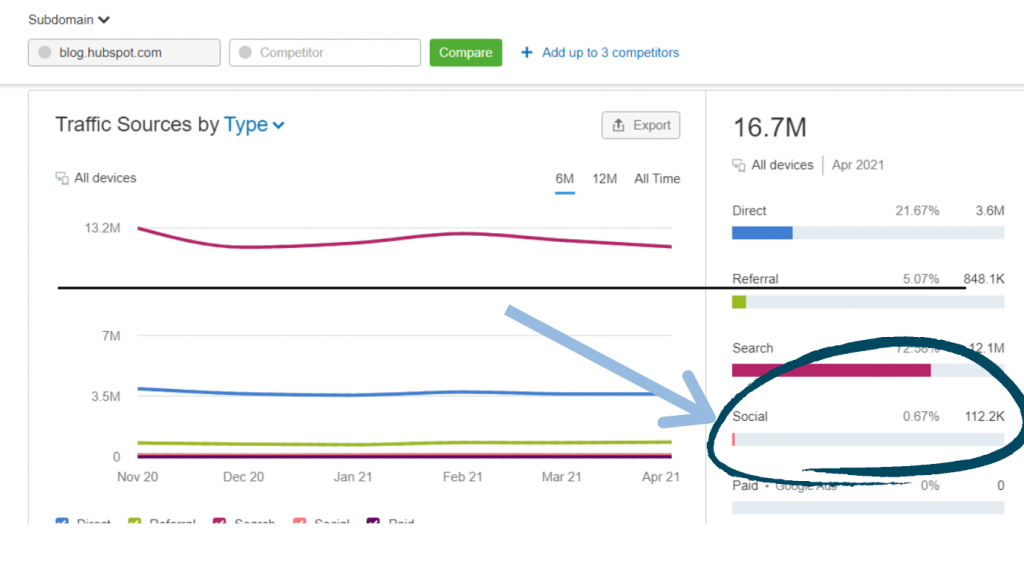As an e-commerce company, the mission is to attract as much targeted traffic as possible to your website. Most of which can convert into paying customers. You can start by pursuing paying traffic, which can pull in immediate traffic. However, this would necessitate a large budget, and you must get it right. Otherwise, you risk blowing the whole budget without seeing any results. E-commerce blogging, on the other hand, is completely accessible.
Without costing a dime, it will assist you in embracing organic, tailored, and transforming traffic. While it takes some time to see results, once you do, they are constant, and a blog will assist you in obtaining a large number of them. However, there are a few blunders to refrain from while blogging about E-commerce.
But during the course of my journey, while going through many e-commerce sites, I have noticed a few mistakes that people make, either while blogging for an e-commerce site or guest blogging for different sites for backlinks which undermines their brand and is unable to bring in any organic traffic and often leads to no sales as well.
I have seen many brands with hundreds and thousands of backlinks, and ranking keywords but with not so good content there is an almost negligible sale on their e-commerce sites.
I would like to discuss the points especially made by the eCommerce platforms and marketers and how can they get it right while doing so.
Let’s begin!
Following are 7+ Mistakes to avoid while blogging for an eCommerce-
Contents
Not knowing the real purpose and Going Off-Niche
Most of the time what happens while blogging, businesses forget their main idea which is of course selling the product. They just randomly post blogs that either would be linked to just their ‘industry’ or ‘product’, and not directly to themselves.
For example, if suppose you sell printed artworks, even though the artworks are made from acrylic or oil paints you cannot go on with citing the reasons which paint is better, this is like going way too broad, and the fact that you don’t even deal in the selling the paints, you sell paintings!
What would happen is, people interested solely in this topic would come to your blog, read the information, and go, and no one would even bother to check out your products!
And this is a common e-commerce blog error, which is getting too big a subject matter, which can happen if you don’t obey any of the simplest blogging guidelines.
Amerisleep mattress could sell their product and was able to increase their conversions by 13.9% which is more than a million dollars turnover for a year. The company was able to attract a lot of visitors to its site but was unable to make any sales.
It changed its course a little and increased its checkout by introducing the following changes.
They went a little wider from their spectrum by not just saying that “Get Good Night’s Sleep” but to explain “How to get Good Night’s Sleep”

Not Implementing Persuasive Content Writing Techniques
Your blog section is the only place to provide value to your readers by sharing useful knowledge. Beginner bloggers are prone to writing sales copy in the title of their posts. However, you won’t add value to your content if you do so, and it’s also not advised from an SEO standpoint.
All the lists should be numbered, followed by several subheadings, videos, and graphics should be used wherever possible.
Now the second tactic that Amerisleep opted for was not just that articles related to their products which was somehow related to the positive impact it had on their lives, but they also invited a ‘Call-to-action’ to their product pages, which is very crucial!
Otherwise, they wouldn’t have been able to increase their sales manifolds.

Forgetting to prioritize to Bring Traffic!
It isn’t going to be a huge hit right away. If you aren’t dedicated for the long run, it will manifest in your blog’s content. You will have struggled to fulfil your original objective of beginning a blog. What’s the result? Many of your efforts have been in vain. You will excel if you follow industry best practices, but it will not be as quickly as you would like.
Building a popular e-commerce brand takes time, and the same is true for blogging.
There is another example Mojarto an online art selling platform that is quite punctual in posting its blogs and have been able to generate a lot of traffic to its site as well!

Along with that, the main purpose of blogging for your e-commerce business is that you also need traffic before sales! That’s why it’s equally important to not just focus on other marketing tactics but also on your blogs.

This is an example of IndiGalleria, an online art gallery that ranks for its blogs too. This helps the site bring in the most traffic along with increasing its sales.
Talking only about your brand
You own your blog and have complete freedom to write anything you want. However, if you wish to have value for your followers and build a loyal following, you must blog on important topics.
For people starting with ecommerce businesses working in the digital world, it’s imperative for them to show their standing in the market and that leads to a little bragging.
It’s fine to mention your merchandise in certain posts if they’re necessary. But, in the end, you want your blog to be a stage in your buyer’s path that takes them to your product site. It is where you may put all of your sales gimmicks to the test.
Take an example here, Instead of writing “Professor Niren Sen Gupta associated with us for an Event” can be changed to “Professor Niren Sen Gupta was the Guest of Honor for the Online Art Exhibition”

Now another case here, of Zomato, a Big Brand offering online food delivery, here they are solely talking about their brand. However, since Zomato is already a Brand and has many customers already, it need not worry about traffic and awareness, because it has reached that stage already. So you don’t need to copy big brands by just talking about your brand, and even the need be go the suggested way.

- Letting blog outrank the product pages
Another scenario is that the blog’s rating power overwhelms the product page’s ability to rate. It would be smarter to place the blog on a subdomain in this situation. It is a very common phenomenon among e-commerce behemoths. As a result, instead of the blog overshadowing the e-commerce side of things, you have two opportunities to score with the keywords.
HubSpot for example publishes many blogs, almost every day, which is not the issue, the issue arises that too many of its blogs rank on certain keywords.
They tackled this problem by having their blogs on a different sub-domain. Its main site is on hubspot.com while its blogs are published on blogs.hubspot.com.
Subdomains are seen by Google and other search engines as different websites. This means that search engines must crawl and index each subdomain separately. This means that now you can also rank for your Blogs while linking back to your main site along with not dominating your product pages. This is the most ideal way of dealing with such issues.

Poor Design
Bad architecture makes a blog sound like an afterthought rather than anything else. Although many eCommerce sites have invested heavily in their home pages, the typography and architecture are out of sync with the rest of the platform when you go to the blog.
Many times people consider, the easy to read fonts and formats but forget the easy readability for the users.
You should also keep in mind the eye span of a person, which is not very wide, hence keeping the blog’s content less wide would mean more readability for the readers.

Focusing too much on SEO
SEO is important for increasing the content’s online exposure. However, if you put SEO ahead of user experience, you could end up with subpar content.
As a result, if you would like your content to be widely read and respected, you should prioritize writing well-researched, high-quality posts.
Does this mean that I shouldn’t rank for my products?
It’s not like that you don’t have to focus at all. But all of your articles shouldn’t be solely posted for the purpose of ranking. Instead, something useful should be shared.
For example, The Bengal store here has many blogs which do not rank either are written for that purpose. They link their blog posts on their product description and also share the blogs on social media, which would first engage the interested readers then it would also convince them to buy it.

Not Considering Social Media Traffic as “Buyers”
Mostly it is thought that social media visitors won’t be buyers and posting too much content would sway them away from your site, and ultimately reduce your following. But that’s not true, posting in a personalized way, and really useful blogs would always attract those readers who would either buy your products or are genuinely interested in your products/brand/article. What matters are the people clicking on the link and landing on your site!
To maximize your blog posts’ exposure, promote them on social media sites such as Facebook, Twitter, Instagram, and LinkedIn.
Hubspot is able to generate 112.2k visitors to its blog from social media. Which is less as compared to its total visitors but not to mention that the number of visitors is still significant enough to make your website’s traffic and sales. Even if you get only a thousand visitors from social media, you will know they are really the dedicated people who truly wish to know more about your brand and maybe even purchasing your products later on, after all, buying comes after the trust is built up.

Answering customer’s general queries through PAA (People Also Ask)
Ranking on Google may not always be on your side therefore, you may proceed with answering general queries of people on your blogs where you can rank for certain snippets of your blogs that are targeted for answering that particular search queries.
These snippets can come in videos or paragraphs or even bulleted points. This may increase your blog traffic and hence may improve sales too.

Leveraging QuestionHub for PAA
For generating the queries related to the niche that you are writing for, you can understand what the target audience wants or what questions or problems they face doing something which your brand might help them in.
Therefore QuestionHub would provide you with all that you wish to answer for your target audience/customers. However, you won’t get any unanswered questions there.
You just have to provide a unique and better solution, if possible.
However, Google is promising to
- Give you unanswered questions for which the content with Google might have some gaps to it, and so you get to fill that gap
- Google will rank and index your content if your answers are relevant and interesting, and different too.
Focus on other Search engines
Though it’s not that Google is going to lose its monopoly anytime soon, it’s important to note that conversion rates from other search engines are also considering providing immense number of conversions for your e-commerce business.
Considering Bing and Yahoo won’t affect you rather add to your backlink profile. Also what if most of your customers that you are targeting are using Bing and Yahoo, do you want to lose them too easily?
Using proper images and info graphics
Using proper images and info-graphics is not a new thing that you must be told.
Who would prefer reading bland articles without any interesting factual images of whatever information you are sharing with them?
It just doesn’t help in engaging your customers but also provides more authority to your statements and observations.
Make sure to include these in high-quality with its description to aid SEO.
An image like these graphs/infographics or just some screenshots to support your claims would give your brand more authority and accountability for what you are saying.

- Including share buttons on your blog page
Not including share buttons would lead you to lose out on a huge number of views and advertisements of your blog and brand.
How?
Well if your content is liked by someone, it is straightforward and sharing something extremely useful then most of your readers would want to share it.
Keeping visible share buttons on your page would save their time copying your page’s link and pasting it to wherever they wish.

Part of Community and Forum

For an effective blog, it is very essential for you to generate content that’s highly relevant to the readers among your customers.
A forum would give you exposure to what your audience demands and diving into their conversations would make you realise the content that would make sense putting out to them.
You can also find many guest bloggers ready to write for your site, which happens quite often in the forums/communities.
Also, don’t get intimidated by the fact that people are commenting on their discussions and hence your content of the blog wouldn’t make much sense as the queries have already been addressed.
The purpose of your blog is highly different from those monologues. Therefore joining the communities would help you a great deal with traffic as well as the content.
Schema Mark up for your Blogs
Schema is a language for the bots of Google to understand what your content is about. This is for them to index it and present it to the readers when the relevant search query arises.
Schema just doesn’t make your articles words get indexed, Google should understand what your content actually means.
When looking for flights to Spain, you would get something like this-

Here the Schema helps to present the data in a more structured way for the users to make them understand easily.
Here’s where schema helps. It tells what your data means after understanding it.

Schema.org is the website for schema mark up, which is a collaborative effort by Google, Yahoo and Bing.
Final words
Your blog acts as a two-way dialogue in which you can get input from your clients. It also provides positive criticism and open comments, which you can use to enhance the product and brand’s consumer service. The more you write, the more leads you’ll receive, including email signups, quotation requests, and, most significantly, sales.
A blog also aids in the ranking of long-tail keywords and cryptic, less popular keyword phrases. You won’t likely score for high-converting keyword phrases if you don’t have a blog.
If you continue to add material that could serve as tools to your blog, you can build natural ties from columnists, writers, and bloggers. Remember that connections are beneficial to SEO, but they may also pull in good referral traffic.

